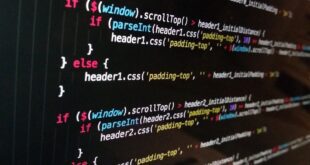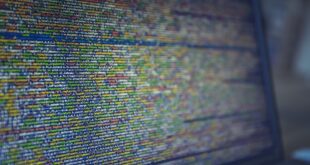Data Science made awesome with Python Libraries
Python has become a popular language used in the field of Data Science. It has a strong presence in Machine Learning and Artificial Intelligence to visualize, transform, and analyze datasets. Coding in Python is smooth and effortless owing to numerous inbuilt useful libraries. Data Scientists love Python Libraries for its user-friendly syntax.
What are Python Libraries?
Python Libraries are pre-written codes developed to assist programmers in filling gaps in their scripts and tasks. They accelerate script work speed and eliminate the need for a new function for typical programming predicaments. Python Libraries help in structuring deep neural networks in no time and pipelining algorithm-driven organizational tasks.
The Best Python Libraries for Data Science
Below are twenty of the top Python Libraries that have become the sharpest tool in the box of Data Scientists:
- NumPy
- pandas
- Matplotlib
- Seaborn
- Scikit-learn
- TensorFlow
- Keras
- SciPy
- Theano
- PyTorch
- XGBoost
- Bokeh
- Plotly
- GeoPandas
- Folium
- NLTK
- Altair
- Django
- Streamlit
- BeautifulSoup
1. NumPy:
It is an unavoidable library for scientific computing in Python that provides constructive dimensional arrays, functions, matrix interactions, and other mathematical operations or transformations.
2. pandas:
It is a powerful open-source tool to manipulate gigantic crucial data and experiment of any section or type of dimension with axioms frames and incorporated statistics.
3. Matplotlib:
Visualization of data from any category, kind, format data requires matplotlib figures.
4. Seaborn:
Matplotlib’s often resulted in a tiring work often; therefore, Seaborn uses enhanced graphics with fewer lines of coding
5. Scikit-learn:
This is a popular machine learning library built on Python and offers regression, unsupervised, classification on visualization data.
6. TensorFlow:
TensorFlow powered with Google’s cloud Platform and offers Machine learning understanding and operates deep brain neural networks.
7. Keras:
Keras is an open-source machine learning system that supports beginners in managing the Neural style contents with the support of back-end libraries.
8. SciPy:
This is an analytical module with features for differentiation and mixture techniques, probability calculations, optimization benchmarks, and more.
9. Theano:
Theano is a deep learning mathematical operation focused python academic inquiry which plays a key role in handling, prototyping dense Numeric computing efficiently.
10. PyTorch:
PyTorch is the greatest tool to create and make precise posts from deep learning calculations equipped with similar GPU accelerating python codes
11. XGBoost:
Made to develop memory-efficacious and computationally efficient Gradient Boosting for modeling of efficient methods of machine learning algorithms.
12. Bokeh:
Designed for user-centric schemes for constructing artistic and new analyses, typical features represented by vectors, components with most complicated widgets.
13. Plotly:
Virulent browser images handler and automatic data functions of graphical chart synthesizer despite high speed cache memory.
14. GeoPandas:
Built for geographic Data Scientist processes reliant on Python supplying naturally GeoLocalization restricted ways of measuring amplifiers or operations.
15. Folium:
Derived from the package branca above by incorporating representation plotting geographical displays powered in Ajax JavaScript thus manipulating data HTML, CSS.
16. NLTK:
Keen approach natural language computing ready for professionals studying or executing classic book schemes that refer to advanced computer natural language programming.
17. Altair:
Altair is custom-made, under active improvement, data focused visualized educational python domain language, chart inputs, or datasets with various interactive geometric shapes object outlines.
18. Django:
A well protected and transferable back-end niche Python framework adequate to work with relational database tools such implementation as software.
19. Streamlit:
An OP platform that dynamically supports input media content, serves algorithms Python scripts support even for novices to create all-in-one interpretive styles of Intelligence APIs.
20. BeautifulSoup:
Has page pre-parsed output stores of garbage algorithm consuming without alert catalog scrape, effectively deployed for fruitful promotion of Python in website coding and inspection robotic tasks.
In Conclusion:
If you are looking to become a Data Scientist, mastering these Python libraries are essential. They will help you analyze and organize large datasets to gain insights and create predictions. Python libraries cut down on development time and there is always room for new libraries onboard to maximize your work output.
 Mind Uncharted Explore. Discover. Learn.
Mind Uncharted Explore. Discover. Learn.




